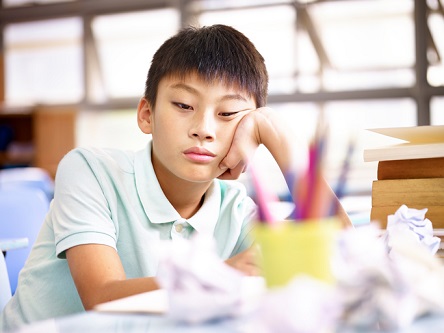
While it’s easy to think of school stress leading to issues such as anxiety and depression, a new study suggests it may be causing a growing number of young people to consider suicide.
The study, titled: ‘Hospitalization for suicide ideation or attempt: 2008-2015’, was undertaken by a team of researchers from Vanderbilt University in Tennessee and published on 16 May.
The researchers examined Pediatric Health Information System data from 31 children’s hospitals across the US to identify emergency department encounters, observation stays, as well as inpatient hospitalisations for children aged five to 17 years.
A total of 115,856 encounters for suicide ideation and suicide attempts were documented during the study period, with more than half (58%) of these resulting in an inpatient hospitalisation. Of these hospitalisations, 13% required intensive care.
“To our knowledge, this is one of only a few studies to report higher rates of hospitalisation for suicide during the academic school year,” said study lead author Greg Plemmons.
At the conclusion of the study, the researchers found that the rates of young people hospitalised for suicidal thoughts or attempts had doubled between 2008 and 2015, with females making up 62% of attempted suicides.
However, the study’s authors said it is unknown whether this is because of school stress or proactive teachers who refer students for help. Whatever the reason, the underlying message for schools is to teach students how to manage stress.
The study also revealed seasonal variations in the suicidality and self-harm cases, with the lowest percentage occurring during summer (June through August) and the highest during spring (March through May) and fall (September through November).
While ‘school stress’ was noted as a factor in this problem, an important stressor, according to some experts, is the role that social media plays when it comes to students’ mental health.
Jean Twenge, Professor of Psychology at San Diego State University, said depression and anxiety in teens began spiking in 2011 and 2012 – when more than half of Americans got a smartphone.
“The arrival of the smartphone has radically changed every aspect of teenagers’ lives; from the nature of their social interactions to their mental health,” Professor Twenge wrote in The Atlantic.
“There is compelling evidence that the devices we’ve placed in young people’s hands are having profound effects on their lives – and making them seriously unhappy.”
Whatever the main reasons for this spike in mental health issues, the researchers from Vanderbilt University who led the latest study say that their findings underscore the need for further research in the role that schools may play.
“What I’m noticing is kids seem to be less resilient and to have more pressure. I think social media also fuels this Instagram life of everything is perfect and cool and you don’t see the other side of life,” Dr Plemmons said.
Need help or know someone who does?
Call the following hotlines:
Samaritans of Singapore: 1800 221 4444
Befrienders KL: (+603) 79568145
Related stories:
Why migrant students perform better at school
Schools must fight racism to become inclusive
‘Race lessons’ coming to preschools


